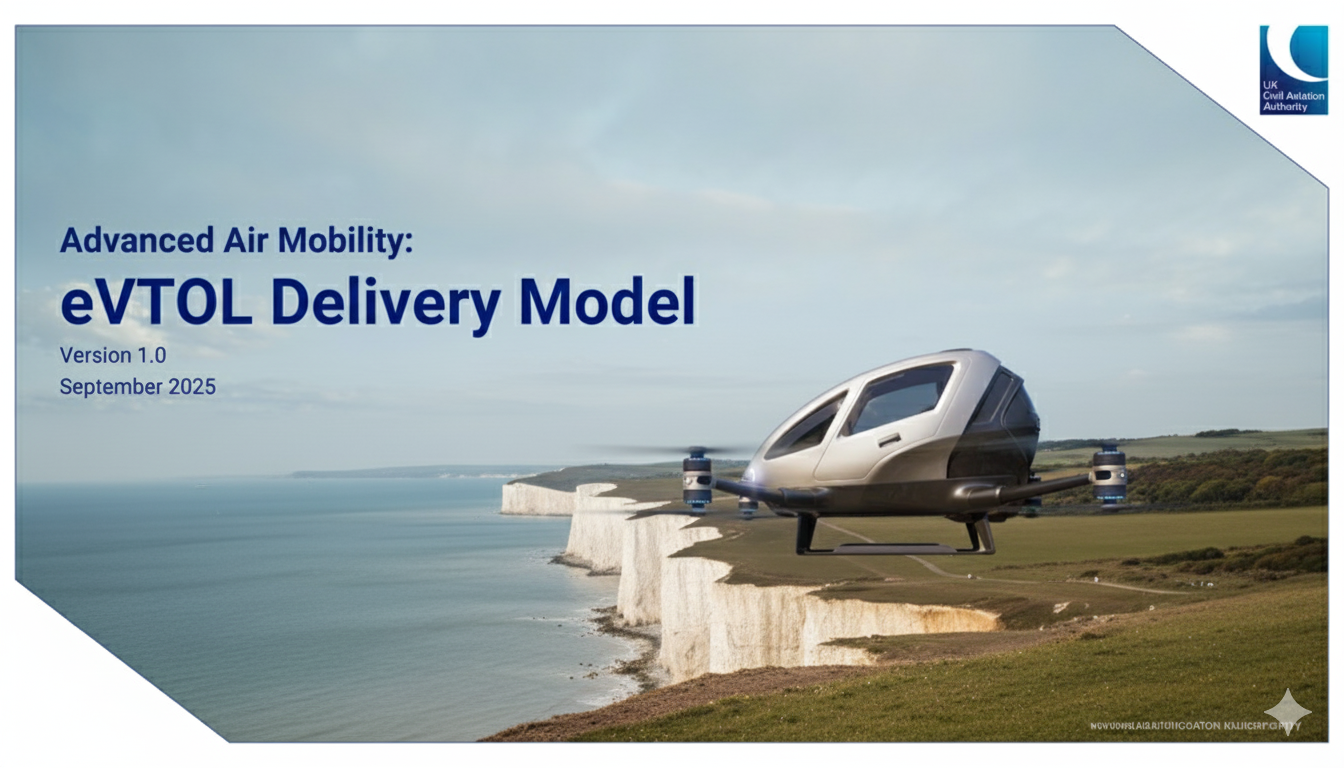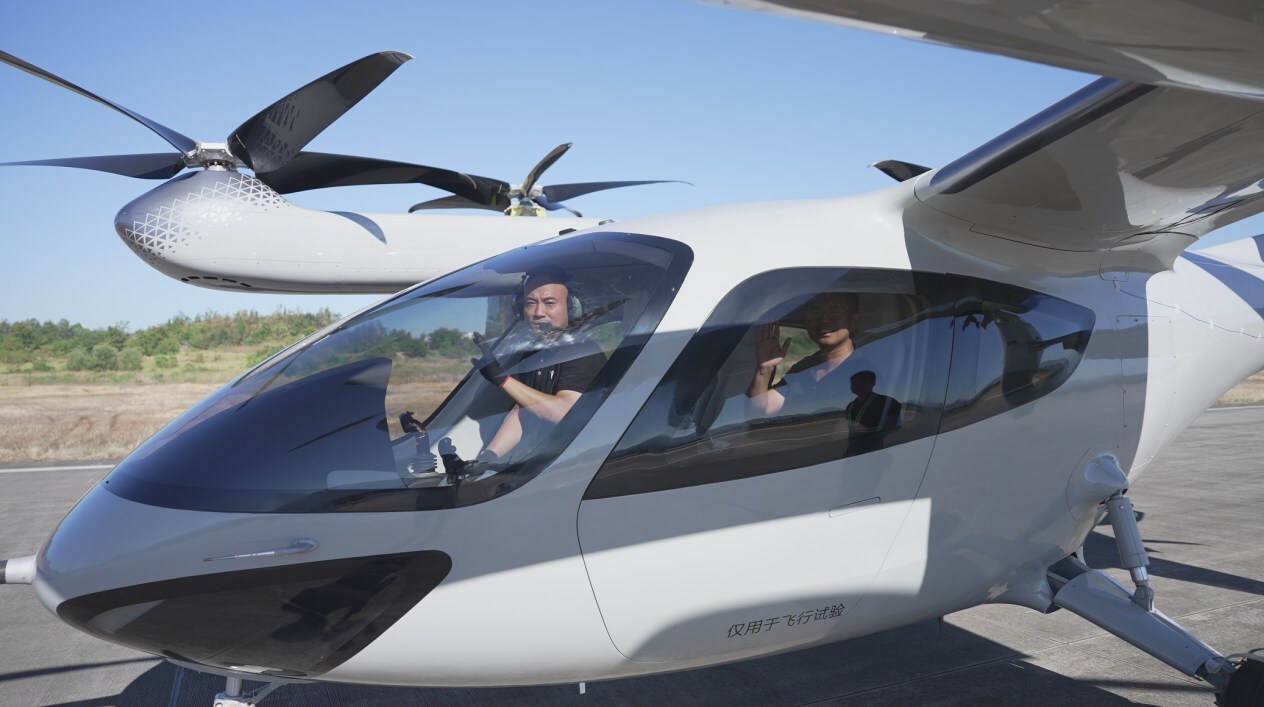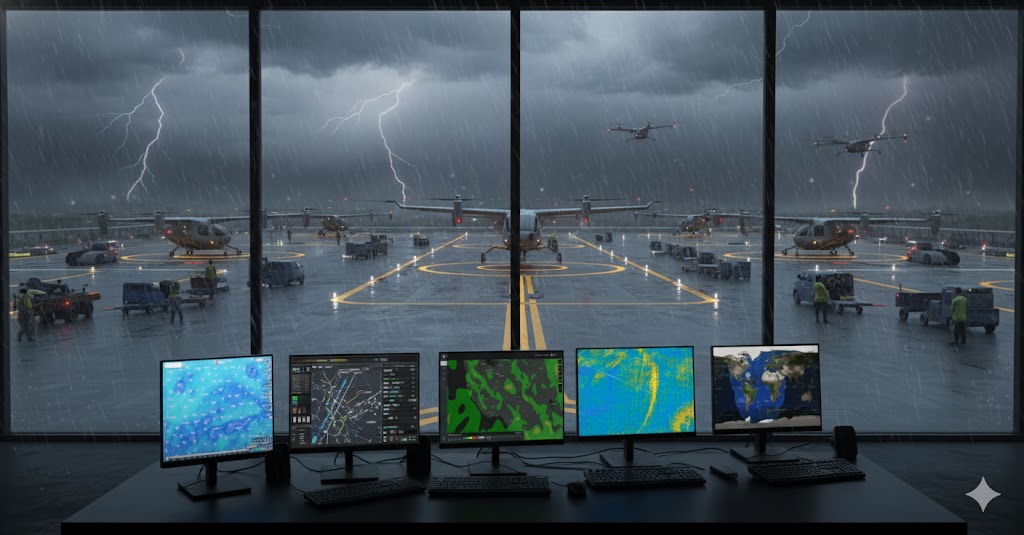The UK Civil Aviation Authority published its comprehensive eVTOL Delivery Model in September 2025, establishing a clear regulatory pathway for commercial electric vertical take-off and landing aircraft operations by the end of 2028. This framework represents Britain’s most definitive commitment to the Low Altitude Economy, moving beyond experimental permits toward full commercial certification.
Flying Now and Tomorrow: The CAA’s Master Plan
The CAA structures its approach across distinct operational phases. “Flying Now” acknowledges current experimental operations under permit systems. Vertical Aerospace has conducted extensive flight testing throughout 2024 and 2025 from Kemble Airfield, demonstrating the adequacy of existing frameworks for pre-certification activities.
“Flying Tomorrow” targets the completion of comprehensive regulatory frameworks, enabling initial commercial passenger operations by the end of 2028. This requires four integrated components: type certification based on UK.SC.VTOL standards, updated legislation for flight operations and pilot licensing, comprehensive operator guidance materials, and modernized CAA operational systems handling eVTOL applications and safety reporting.
The third phase addresses post-2030 developments, including autonomous aircraft, alternative propulsion systems, and integrated digital air traffic management, once technology and operations mature sufficiently.
Building on What Works: Why the CAA Isn’t Reinventing the Wheel”
Rather than creating entirely new frameworks, the CAA adapts established aviation regulations. Aircraft capable of both wing-borne flight and vertical operations receive “Powered Lift” classification using ICAO definitions, while wingless aircraft lacking autorotation capability become “Non-Conventional Helicopters”. This pragmatic approach ensures equivalent safety treatment across aircraft categories.
Commercial operations require pilots to hold Commercial or Airline Transport Pilot licenses plus specific type ratings. The CAA classifies eVTOL aircraft as Complex Motor-Powered Aircraft by default, establishing higher safety standards appropriate for passenger transport while retaining the discretion to assess cases on a case-by-case basis.
Operational flexibility demonstrates sophisticated risk management. Day and night operations under visual and instrument flight rules receive approval from service launch, though certain activities remain restricted pending evaluation. Battery recharging with passengers aboard requires specific risk assessments and CAA-approved mitigation plans.
Industry Investment Reaches £125 Million.
The UK Research and Innovation Future Flight Challenge has facilitated £125 million in government funding. This £300 million total program includes £175 million industry co-investment, positioning Britain as a significant player in advanced air mobility development.
Vertical Aerospace exemplifies this progress. Their VX4 prototype achieved Europe’s first piloted wingborne eVTOL flight in open airspace in May 2025, reaching 120 knots and 2,000 feet while collecting over 22 billion data points. The company now enters transition testing, demonstrating seamless shifts between vertical lift and wingborne flight modes that define tiltrotor eVTOL capability.
Infrastructure development parallels technological advancement. Skyports Infrastructure completed the UK’s first vertiport testbed at Bicester Motion in early 2025. The facility includes a 160-square-meter passenger terminal and serves as a testing ground for flight operations, ground infrastructure, and air traffic management procedures. Vertical Aerospace conducts demonstration flights from this site as part of the Advanced Mobility Ecosystem Consortium project.
Playing Nice with Others: The Global eVTOL Rulebook
The CAA emphasizes international coordination while maintaining UK regulatory sovereignty. The regulator collaborates with the National Aviation Authorities Network, including the FAA, CASA, Transport Canada, and CAA New Zealand, which published a harmonization roadmap in June 2025. This coordination aims to establish globally consistent certification approaches while allowing regional flexibility where appropriate.
Alignment with EASA’s SC-VTOL certification standards reflects practical considerations. Geographic proximity and regulatory consistency favor positions that are compatible with UK interests, although the CAA reserves the right to diverge when justified. This balanced approach should facilitate aircraft validation across multiple jurisdictions while protecting British regulatory autonomy.
Vertiport Integration and Airspace Management
The CAA integrates vertiports within existing aerodrome frameworks rather than creating parallel systems. This decision raises compliance requirements but provides predictability for developers and operators. Aerodromes receive type-agnostic certification requirements, allowing powered-lift aircraft to operate efficiently regardless of the flight regime.
Initial operations integrate eVTOL aircraft into current airspace and air traffic management systems. The regulator anticipates that higher traffic volumes beyond 2030 will require new operational concepts and technologies, particularly digitized ATM systems. This evolutionary approach enables early deployment while preparing for future scaling challenges.
The Billion-Dollar Sky Rush
Global eVTOL market assessments vary significantly across research firms. Some analysts report market values ranging from $772 million to $13.9 billion in 2024, with growth projections of 11.4% to 54.9% compound annual growth rates through 2030-2034. These variations reflect different market definitions and measurement methodologies within the rapidly developing industry.
For UK manufacturers, the delivery model establishes UK.SC.VTOL Issue 2 as the certification baseline, encouraging design alignment with both British and European requirements. Operators can prepare for instrument flight rules-capable services, while training providers develop type-rating courses and simulator programs, anticipating the introduction of new aircraft into service.
Will We Really See Flying Taxis by 2028?
The CAA’s 2028 timeline requires convergence of regulatory processes, certification pathways, and infrastructure development within three years. Success depends on factors beyond regulatory control, including the pace of technology development, industry operational readiness, and the time required for parliamentary approval of legislative amendments.
Former Aviation Minister Anthony Browne, who served from November 2023 to July 2024, co-chaired the Future of Flight Industry Group during this critical development period. His successor will continue the government’s commitment to the 2028 commercial operations target.
The CAA plans sustainable cost-recovery models for ongoing regulatory activities, including certification, licensing, and oversight. This approach ensures long-term funding for regulatory excellence while distributing costs appropriately across industry participants. Britain’s methodical regulatory approach, combined with robust industry development and international cooperation, positions the UK competitively in global advanced air mobility markets. The emergence of routine eVTOL operations will fundamentally alter the concepts of urban and regional transportation. Whether commercial passengers will access vertiport services by 2028 depends on the successful convergence of technology, regulation, and infrastructure development. Still, the regulatory foundation now provides clear pathways for industry investment and planning.
Download PDF Whitepaper:




